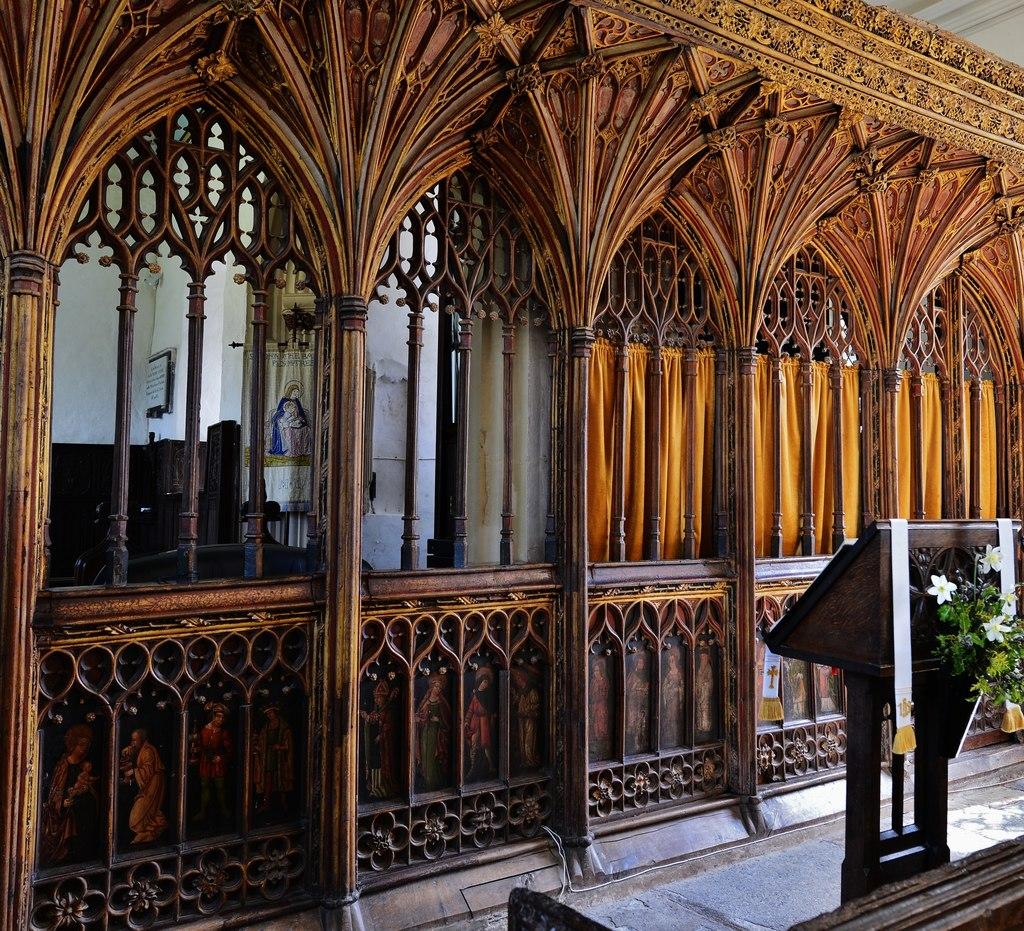Yr Eglwys Norwyaidd
Bae Caerdydd, City of Cardiff
Anaml iawn y gwelwch yng Nghymru eglwys sydd â chladin pren gwyn – ac mae gan yr Eglwys Norwyaidd stori unigryw i’w hadrodd, yn ogystal â chysylltiad ag un o hoff awduron plant y byd: Roald Dahl.

The manor of Plymtree predates Domesday, the present church of St John the Baptist dates from 14th century and replaced a much earlier structure.
Plymtree, Devon
The first rector, Johel Walerande, was appointed on 9th April 1261. The arched doorway in the north wall is probably all that remains of his church, but the yew tree in the churchyard has been dated at over 1100 years old and would have been 400 when Johel arrived!
The true gem of this church is a fan vaulted 15th or early 16th century century medieval rood screen complete with original paintings on the panels, it sparkles golden in the sunshine. It is, without doubt, one of the finest and best preserved screens in Devon, with beautiful fan vaulting and ornate colourful painting.
One scene on the lower panels depicts the Adoration of the Magi. A local story suggests that the figures of the 3 Kings portray Cardinal Morton, Henry VII, and Prince Arthur. There is also a multitude of other figures, 34 in total, some representing local people. One is Joseph of Arimathea, a reminder that Plymtree was on the medieval pilgrim’s route to Glastonbury and associated with legends of Joseph and the Holy Grail.
In the north wall is a blocked doorway which may be early Norman or late Saxon, suggesting that there was a church here well before the Norman Conquest. At the west end is a wonderful 16th century alabaster panel, depicting the risen Christ and Roman soldiers in minute detail. Some of the pew benches have lovely 15th and early 16th century carved ends.
The church visitors’ book includes many comments about the beauty, tranquillity, peace and atmosphere of the church building.
Outside, the tower has a rare statue of the Madonna and Child, which was conserved in 1989 and consequently won the John Betjeman Award from the Society for the Protection of Ancient Buildings.
In the churchyard is a Celtic cross made of Dartmoor granite. The cross head was discovered in the 1890s and the shaft found acting as a gatepost for the rectory.
Bae Caerdydd, City of Cardiff
Anaml iawn y gwelwch yng Nghymru eglwys sydd â chladin pren gwyn – ac mae gan yr Eglwys Norwyaidd stori unigryw i’w hadrodd, yn ogystal â chysylltiad ag un o hoff awduron plant y byd: Roald Dahl.
Grangetown, City of Cardiff
Mae gwaith y pensaer John Coates Carter yn gyfrinach sydd wedi ei chadw’n ddiogel. Mae ei adeiladau’n ymgorffori y Mudiad Celfyddyd a Chrefft ar ddechrau’r ugeinfed ganrif – a dywedir bod eglwys St Paul ymhlith y gorau o’i eglwysi cynnar sydd wedi goroesi.
Pontcanna, City of Cardiff
Adeiladwyd yr eglwys hon yn 1883-6 gan y pensaer J Prichard. Ei fwriad gwreiddiol oedd adeiladu eglwys ar ffurf croes, ond daeth yn amlwg bod hyn yn rhy uchelgeisiol - ac adeiladwyd tair cilfach cyntaf corff yr eglwys yn unig.